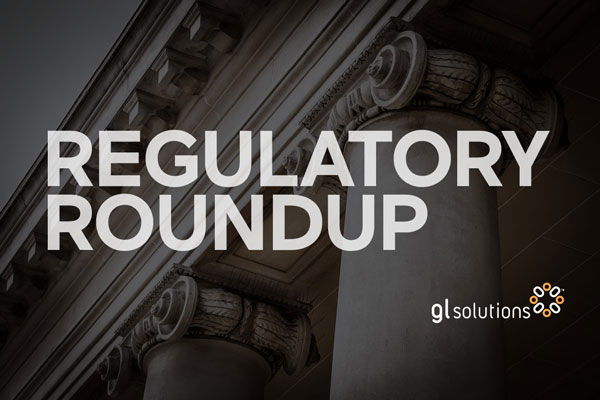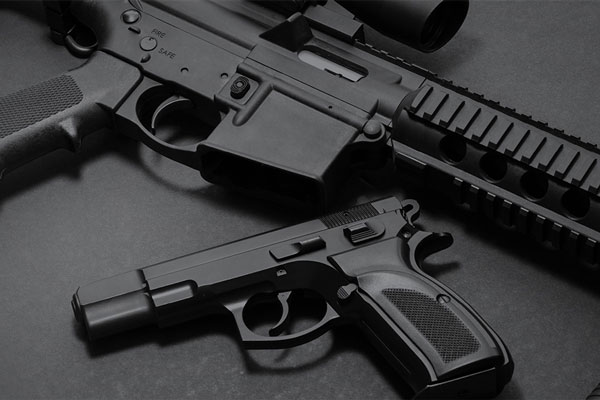Protect the public and regulate properly by streamlining and integrating your agency’s tracing, background check and weapons permitting functions. Modernizing your firearms permitting system helps ensure public safety by keeping guns out of the wrong hands. A highly configurable firearm licensing and tracing application adapts to your unique needs and helps you to adhere to state and federal laws and improve public safety.
Sales of handguns and other weapons continue to set records in many states. Amid the surge, lawmakers and regulatory officials continue to juggle the needs of firearm owners, public safety professionals and the public. Despite such differences, people across the political spectrum want to ensure that firearms are possessed only by people entitled to have them. To achieve this, regulatory officials need instant access to accurate data of gun owners. They also require compliance software that allows them to run background checks quickly, ensuring that sanctioned sales happen in a timely manner.
Use a firearms licensing solution to manage the following aspects of your agency’s operations:
- Pistol Permits
- Firearm Registrations
- Gun Sales
- Firearms dealer Licensing
- Security Service Licensing
- Private Investigator Licensing
- Bail Enforcement Agent Licensing
- Bondsman Licensing
- Explosives Licenses
Implement a firearms licensing system to help your agency with:
Accurate Firearm Tracing:
Firearms licensing software that knows exactly who and when someone owned a firearm helps law enforcement and investigators solve crimes quickly.
“A firearms system needs to track the minute that gun changes hands,” explains Marcy Merlot, a Technical Analyst for GL Solutions, who facilitated and managed the implementation of firearms licensing systems—from testing to go-live—for two state agencies.
The system must track the location and time of the firearm purchase from a gun dealer.
Real-Time Background and Gun Checks:
Keep your law enforcement officers safe by giving them access to nearly instant results in the office or in the field. For example, provide context to officers heading to calls or disputes about whether the person of interest holds a firearms permit, including the quantity and makes and models of owned firearms.
Similarly, give officers in the field the ability to search license plate numbers to generate a list of all firearms owned and permits held. When responding to a call, for example, a license plate number search reveals who owns a car—and if they own a weapon.
“If they go to a home, for a domestic dispute,” says Merlot, “they use the license plate number, the address or other information they know to find out if they’re walking into a firestorm or not.”
Connect your firearms licensing system to state and federal systems and/or databases tracking stolen firearms. Automatically flag exact matches by serial number, while adding partial matches to a list for manual verification.
Powerful interfacing options
Sophisticated interfaces give a firearm licensing system and the system’s users nearly instant access to information stored in other databases.
- When a person seeks to buy a gun, use a firearms licensing system to query your state’s criminal database and the FBI, to return federal convictions as well as convictions in other states. Pull that information into the firearms licensing system.
- Connect with mental health reporting databases during background checks. In addition, use the functionality in reverse. When a person gets admitted to a psychiatric hospital, information flows into a firearms system, and returns permit information.
- Query voluntary admissions systems during background checks for those people who get admitted to psychiatric hospitals voluntarily.
- Check pistol permit holders against a state judicial protection order registry. This prevents the subjects of protective orders from possessing handguns.
- When police officers search for a license plate number while in the field, name and date of birth information flow into firearms permitting software, returning a list of all firearms owned and permits held.
- Send a request to the National Crime Information Center for all gun authorizations for the day.
- Query your state databases to get a list of all stolen or lost firearms in the state. Flag exact matches automatically and add partial matches to a list that users match against firearm permits in the licensing system. The functionality enables firearms dealers to run stolen-weapons checks.
- Query your states department of public health database of death certificates, importing a list of deceased people and marking them as deceased in the system.
Integrated Permitting:
Operate efficiently by issuing concealed-carry and other permits while licensing other professions for which your agency is responsible.
Protect the public and regulate properly by streamlining and integrating your agency’s weapons permitting functions—including in POC (point of contact) states that experience many legislative changes; according to Gifford’s Law Center, “federal law provides states with the option of serving as a state “point of contact” and conducting their own background checks using state, as well as federal, records and databases, or having the checks performed by the FBI using only the National Instant Criminal Background Check System (“NICS”) database.”
Ballistics Retention:
Record and track information for all weapons surrendered in your state. As the weapon travels to and from the vault, lab and court, for example, the firearms license application notes the dates and location.
Ballistics retention, “helps an agency to know the history of the gun,” explains Merlot.
Retailer Portal:
Meet the needs of retailers and purchasers with an easy-to-use Firearms Retailer Portal, a web-based portal your agency offers, that gives firearms sellers in your state the ability to run background checks in minutes—and satisfy firearm license requirements.
If someone tries to sell their gun to a dealer, the dealer enters the person’s information into a firearms licensing system. The system runs a background check on the individual. In addition, the system checks for stolen firearms. If the individual qualifies, they sell the gun and the system records that information—starting or continuing the history of that weapon. The efficient process from the authorization to the registration lasts 5-10 minutes, according to Merlot.
If someone tries to purchase a gun from a dealer, the dealer runs a background check on that individual, using a firearms license application. If the report comes back clean, according to Merlot, they finish the transaction and register the gun.
Configurable System
A configurable system improves thoroughness, efficiency and public safety. Look for a solution that fits your needs—not a one-size-fits-all system.
Some of the ways a system adapts to fit the needs of an agency include:
- Third party integrations
- Background check interfaces
- Fingerprint card alerts
As far as interfacing, according to Merlot, “it would be being able to identify different ways that you need to interface with third parties to make sure that the people are safe. And their history is safe. And the gun is safe.”
PII Security
Some individuals should not have access to firearms, but keeping guns away from those who shouldn’t have them can be complex. So can the privacy rights of all parties: personally identifiable information (PII) must be properly maintained.
At the time of purchase (or attempted purchase), a firearms licensing system searches a wide range of federal and state systems to determine eligibility, including:
- FBI and state criminal records
- Psychiatric hospital patient records through MHAR and VATS
- Protective or restraining orders listed in your state’s registry
- Any other vital records maintained in your state, such as transferal and ownership verification
Look for a system that pulls the information directly into the firearms licensing software and keeps individuals’ PII safe and properly protected through the entire process.
System Efficiency
When asked the main benefit for using a firearms permitting system? Merlot says: “speed.”
She describes seeing stacks of paper whittled down, as automation turned the process into mere minutes to complete. Merlot says she saw piles of paper gun registrations at the agencies that she worked with before they transitioned to a firearms licensing system.
“They had no way of automating anything,” she explains. “So, you have to pick up that piece of paper. Somebody scans it. It just moves from person to person. And now they’re happening in a minute to register a firearm online.”
One state agency felt burdened with manual processes and a hodgepodge of digital systems that didn’t communicate with each other. Tracking gun permits and federal firearm licenses relied on a mix of paper records, spreadsheets, dated software and an interactive voice response (IVR) system.
The agency staff entered information repeatedly in different places. Multiple systems for various functions created confusion for applicants and gun dealers—not to mention agency staff.
The result of this status quo? Limited capacity, poor customer experience and high levels of human error.
A configurable integrated solution tied numerous functions into a single system. Now, weapons tracking and background checks exist in one system with databases that communicate.
How to Modernize your Firearms License Management Software
State agencies from Alaska to Connecticut use GL Suite, GL Solutions’ configurable firearms licensing and background-check SaaS solution to improve processes, grow efficiency and maintain public safety.
GL Suite’s Agency Transformation service moves beyond scattered improvements, instead implementing a truly strategic model of digital transformation. We take a consultative approach, working alongside your agency to perform a deep analysis of your permitting and licensing systems and processes. Then we craft a detailed plan following the five phases of Agency Transformation.
Time to Modernize
GL Solutions helps your regulatory agency run, grow and adapt through modern software and automation that helps solve your agency’s greatest challenges. To learn more, contact us.
To receive the latest regulatory news delivered to your inbox each week, subscribe to our newsletter.


